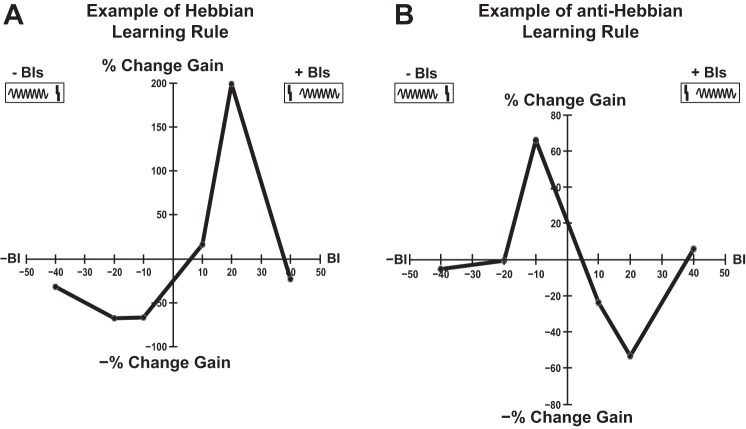Fig. 6.
Representative examples of bimodal-induced changes in RLF gain. Examples of Hebbian (A) and anti-Hebbian (B) learning rules for the RLF gain in a sham (S) and exposed-no tinnitus (ENT) animal, respectively. Statistically significant differences between the RLFs evaluated before and after bimodal stimulation were confirmed for each BI with a two-way ANOVA test (see materials and methods for more details). Positive BIs correspond to stimuli configurations in which Sp5 electrical stimulation (A and B, top right box, solid vertical line) precedes auditory stimulation (A and B, top right box, sinusoid line). Negative BIs correspond to the opposite order of stimuli (an example is illustrated in the top left boxes of A and B).

